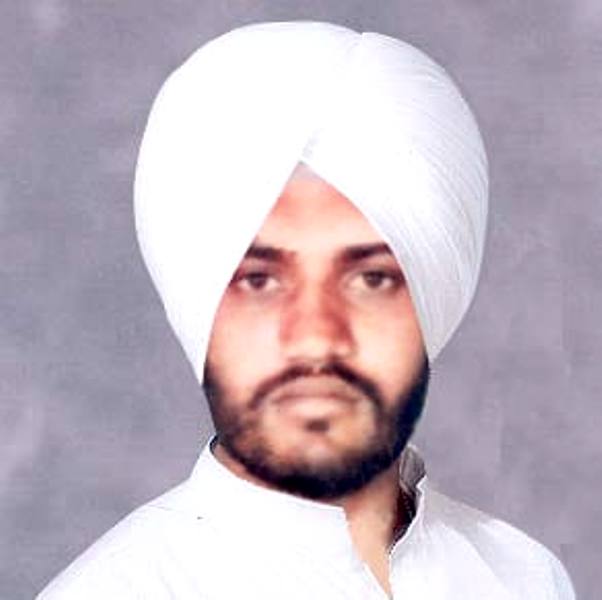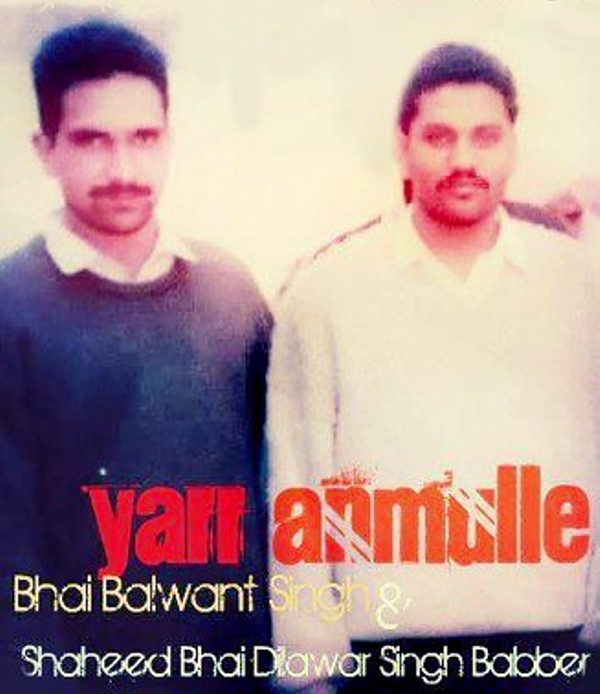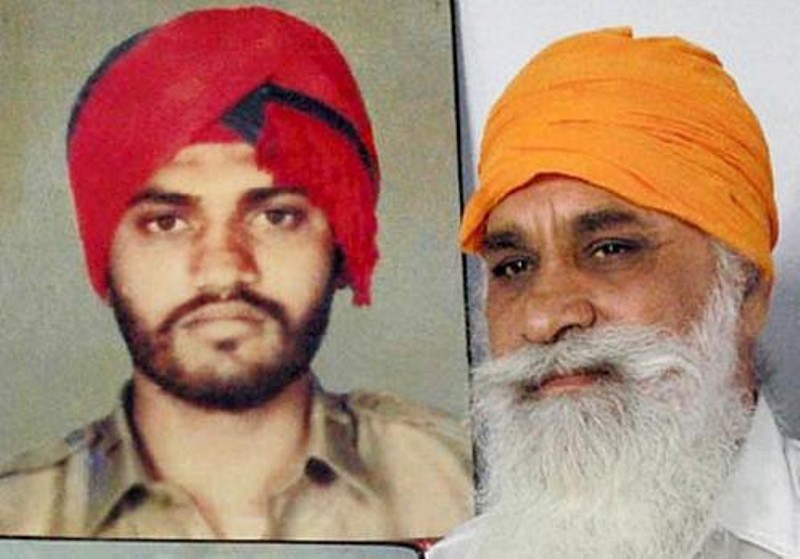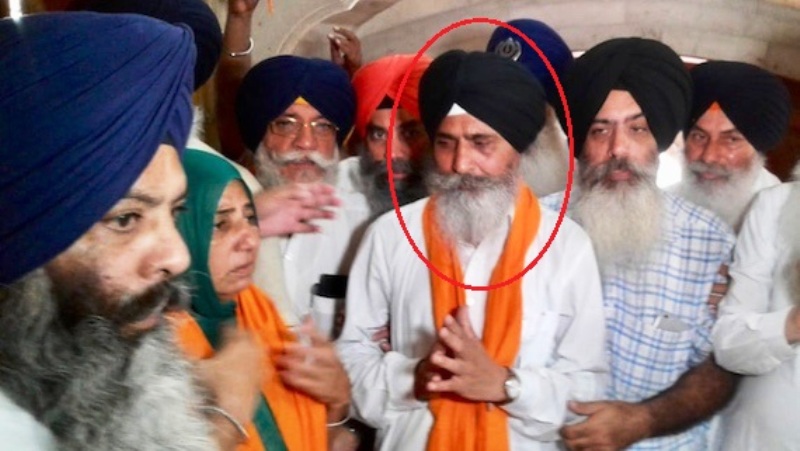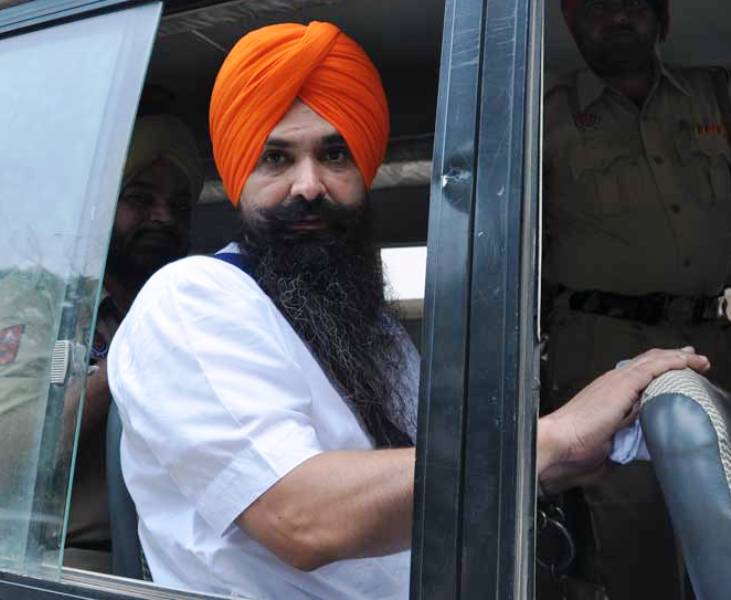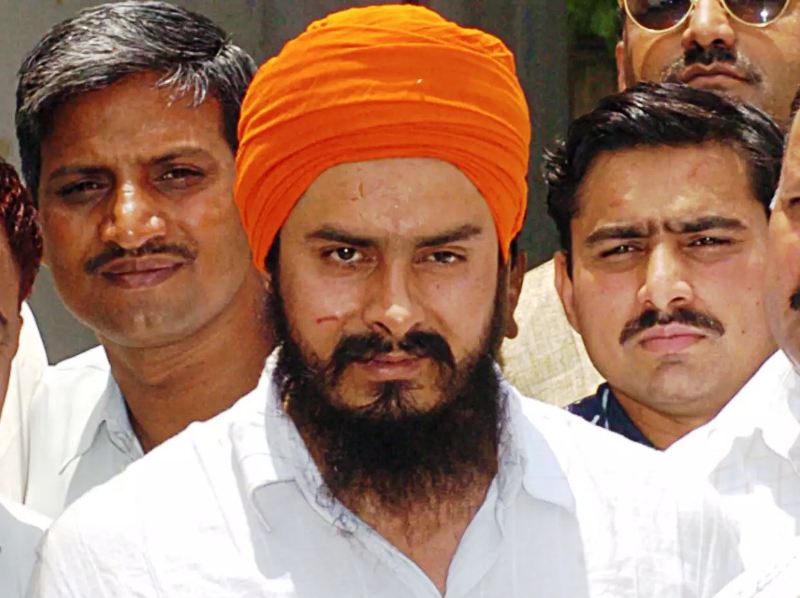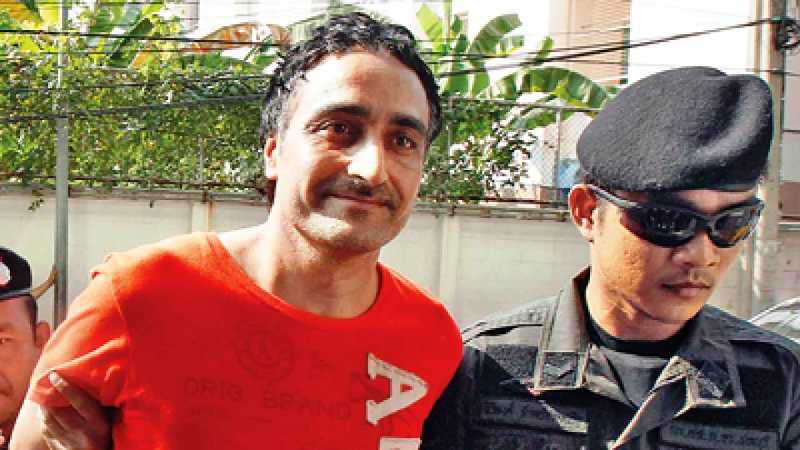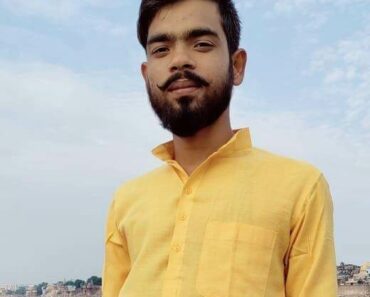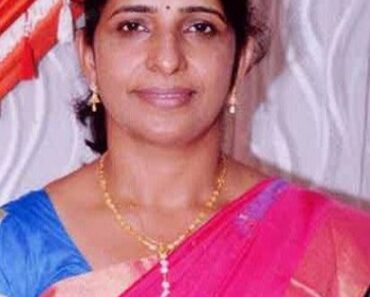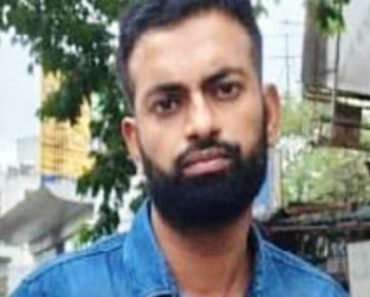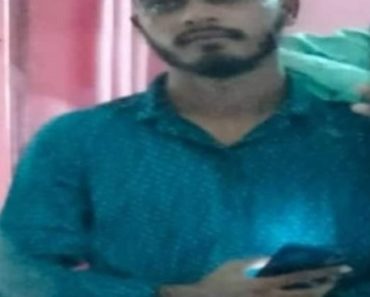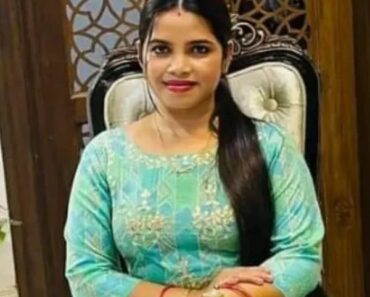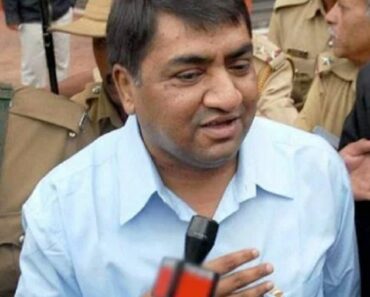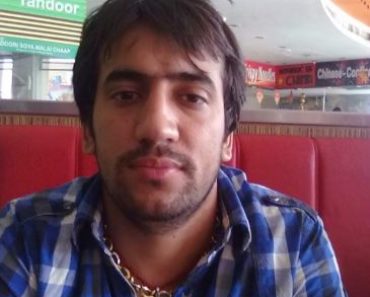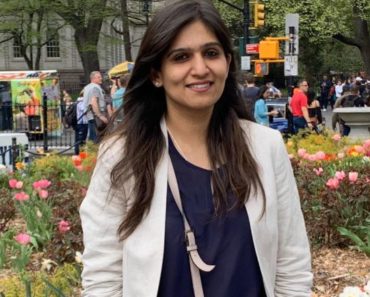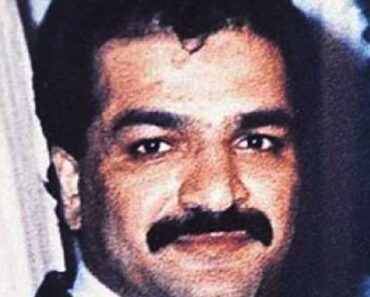Dilawar Singh Babbar (1970-1995) or Dilawar Singh Jai Singh Wala [1]Sikh Channel- YouTube was a Punjab Police officer and member of Babbar Khalsa International (BKI) who assassinated the former Chief Minister of Punjab Beant Singh on 31 August 1995 by acting as a suicide bomber at Secretariat Complex, Chandigarh.
Contents
Wiki/Biography
Dilawar Singh was born on Tuesday, 18 August 1970 (age 25 years; at the time of death) in his maternal village Panjgrain, Punjab. His zodiac sign is Leo. Dilawar Singh’s father relocated from his native village, Jai Singh Wala, to Patiala, where Dilawar grew up on street no. 12 in Guru Nanak Nagar. There, he met and became friends with Balwant Singh Rajoana, Lakhwinder Singh Lakha, and Gurmeet Singh, all of whom were later accused of Beant Singh’s assassination. While Lakha resided at the intersection of streets 9 and 13, Gurmeet Singh lived on the street no. 14. After completing his formal education, Dilawar Singh began his career as a Punjab Police officer, along with Balwant Singh Rajoana.
Physical Appearance
Height (approx.): 5′ 9″
Hair Colour: Black
Eye Colour: Black
Family
Parents & Siblings
Dilawar Singh Babbar’s father, Harnek Singh, worked as a Senior Assistant in the Youth Welfare Department of Punjabi University, Patiala. His mother’s name is Surjit Kaur. Dilawar had two brothers, Chamkaur Singh and Harvinder Singh. Chamkaur Singh worked as a senior financial analyst and revenue official in the Department of Youth Service, Government of India.
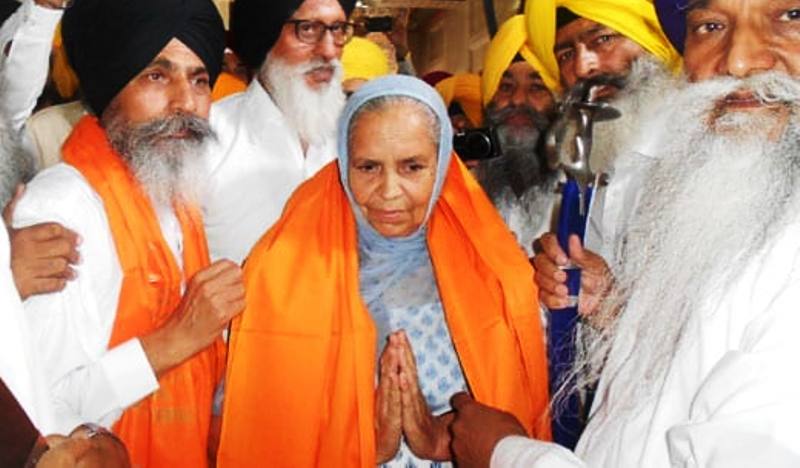
SGPC’s functionaries bestowing the Siropa upon Dilawar Singh’s mother to honour her in the memory of her son
Wife & Children
He was unmarried.
Insurgency in Punjab
Beant Singh was sworn in as the Chief Minister of Punjab in 1992 in the aftermath of Operation Blue Star, the assassination of Indira Gandhi, and the 1984 anti-Sikh riots. At that time, in the terrorism-ridden Punjab, well-armed Sikh separatists had been fighting for an independent homeland of Khalistan for nearly 12 years. One of these separatist organisations called Babbar Khalsa International (BKI) was joined by Dilawar Singh while he was serving in the Punjab Police. From 9 June 1993 to 18 September 1994, he served as a Special Ops Officer in the district of Fatehgarh Sahib. Working as a Special Ops Officer, he witnessed the government-approved counter-terror operations in which Punjab Police undertook numerous extra-judicial killings and illegal detention of young Sikhs. By November 1994, the Punjab government fired a number of Special Ops Officers throughout the state, including Dilawar Singh. With this dismissal, Dilawar Singh realised that SPOs were employed by the government only to massacre innocent Sikh youths in the name of counter-terror operations. These events outraged Dilawar, who then volunteered to assassinate the Chief Minister of Punjab Beant Singh. Although Beant Singh’s success in minimising terrorism in Punjab resurrected the overall respect for Sikhs in the country which had been lost after Indira Gandhi’s assassination, he was accused of approving fake encounter killings, abductions, and secret cremations during the insurgency in Punjab when the government was trying to get rid of Khalistani militants. Thereafter, Dilawar rented a one-room accommodation at a secluded place in Village Ratoli, Tehsil Rajgarh, Sirmour district, around May or June 1995, where he held meetings with other conspirators of BKI regarding the assassination.
The assassination of Beant Singh
On 31 August 1995, Dilawar Singh, along with the backup bomber Balwant Singh Rajoana, reached the secretariat complex, Chandigarh, in a freshly painted white Ambassador bearing Delhi licence plates. Dilawar Singh wore his Punjab Police uniform underneath which 1.5 kg of explosives in a bandolier-shaped belt was tied around his waist. After a while when Balwant left, Dilawar scribbled a couplet in Gurmukhi script on a piece of paper which read,
Je mein shaheedan di yaad wich geet na gaaye, teh ohna diyan ruhan Kuralun giyan”
(If I don’t recite rhymes in memory of the martyrs their souls would be tormented).
At 5.10 p.m., three white Ambassadors pulled up near the VIP portico at the secretariat complex to pick up the CM. Just when Beant Singh was about to step into the car, Dilawar walked toward his bullet-proof car and pressed the button of the bomb. Along with Beant Singh, the explosion claimed the lives of 17 others including 3 Indian commandos and Beant Singh’s close friend Ranjodh Singh Mann. Later, BKI claimed responsibility for Beant Singh’s death and attributed the deep-rooted criminal conspiracy to the indiscriminate atrocities against the innocent Sikhs during Beant Singh’s tenure as CM.
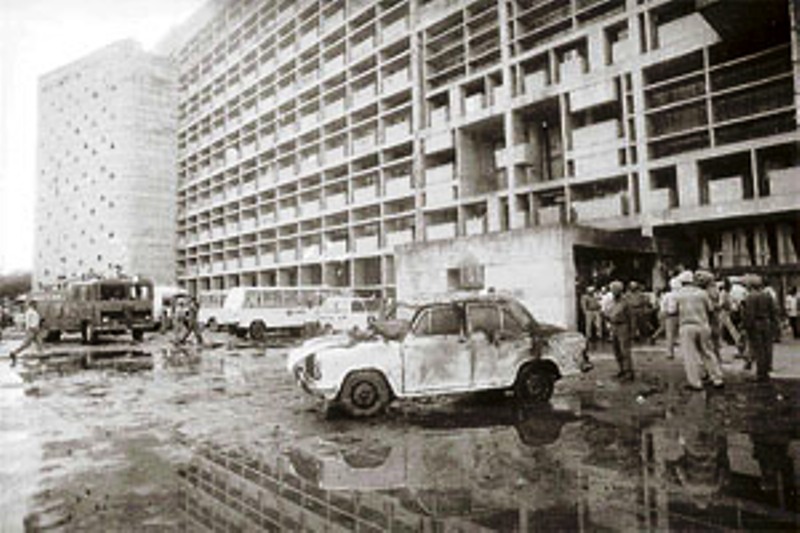
A picture of Secretariat Complex, Chandigarh, clicked on 31 August 1995 after the suicide bomber Dilawar Singh Babbar assassinated the CM Beant Singh
Aftermath of Assassination
An abandoned Ambassador car with a Delhi number recovered by the Chandigarh police in September 1995 led to the arrest of the first convict Lakhwinder Singh. By February 1996, the police discovered other conspirators, Gurmeet Singh, Naseeb Singh, Navjot Singh, Jagtar Singh Tara, Shamsher Singh, Jagtar Singh Hawara, Balwant Singh Rajoana, and Paramjit Singh Bheora. On 25 December 1997, Balwant Singh Rajoana confessed his hand in Beant Singh’s killing in the makeshift courtroom of Burail Jail, Chandigarh. Before being silenced, he raised pro-Khalistan slogans,
Khalistan zindabad, Bhai Dilawar Singh zindabad!”
His confession left the prison authorities and journalists awestruck who then asked Rajoana, “Why would someone at such a time want to give up his life?” to which Rajoana replied,
Tusi key jano dosti kinj nebhai jandi hai.”
(How do you know the way of living up to friendship?)
Apparently, Dilawar and Balwant had tossed a coin to decide who would become the suicide bomber. So when Dilawar won the fatal toss and agreed to lose his life, he asked Balwant Singh to confess his hand in the crime when the time comes.
Other Convicts in the Assassination of Beant Singh
Balwant Singh Rajoana (Backup Bomber)
On 25 December 1997, Balwant Singh Rajoana, a former Punjab Police constable, confessed his hand in Beant Singh’s killing in the makeshift courtroom of Burail Jail, Chandigarh. The special CBI court gave the death sentence to Rajoana on 1 August 2007. Rajoana was jailed in Patiala Central Jail when the Chandigarh court issued the death warrant to the Patiala jail authorities for executing him, which was scheduled on 31 March 2012. Rajoana’s execution, which was to be carried out at the Patiala Central Jail, was stayed after Punjab CM Parkash Singh Badal met Pratibha Patil seeking clemency for Rajoana. Later, his death sentence was commuted to life imprisonment on the grounds of his long incarceration of nearly 26 years.
Jagtar Singh Hawara (The Mastermind)
Hawara is considered to be the mastermind behind the plot to kill Beant Singh. A member of the BKI, Hawara arranged the explosives and finances to purchase the Ambassador car used in the assassination. In January 2004, he escaped, along with Tara and one another, from Burail jail after digging a 110-foot-long tunnel from inside a high-security jail in Chandigarh. However, he was rearrested in 2005 in Dehli. Later, his death sentence was commuted to life imprisonment.
Jagtar Singh Tara (The Mastermind)
Tara worked as a mechanic-cum-taxi driver in Delhi. An active member of BKI, Tara helped Hawara purchase the car and brought it to Chandigarh, where he got it re-painted to enter the secretariat complex. Tara was arrested in September 1995 in Delhi. However, he escaped with Hawara during the trial of the case in 2004 and was on the run for 11 years. He was later arrested in Thailand in 2015. In 2018, he was sentenced to life imprisonment.
Others
Lakhwinder Singh was a Punjab Armed Police constable attached to the official vehicle wing of the secretariat. Gurmeet Singh was a diploma holder in engineering, who worked for a Chandigarh service centre of a consumer electronics company. Shamsher Singh, Lakhwinder Singh, and Gurmeet Singh were given life imprisonment by the court of R K Sondhi in the makeshift courtroom of Burail Jail. Meanwhile, Naseeb Singh was given 10 years imprisonment, which he had already undergone during the trial spanning over 11 years. The seventh accused Navjot Singh was acquitted by the special court.
Address
House No. 23, Street No. 12, Guru Nanak Nagar, Patiala, Punjab, India.
Facts/Trivia
- During a hearing before the then District and Sessions Judge Amar Dutt, Balwant Singh Rajoana, while remembering Dilawar, said,
It was nothing but divine intervention. Just as Bhai Dilawar Singh was approaching the Chief Minister, everyone around was momentarily blinded. That’s the reason why there are no eyewitnesses.”
- Dilawar Singh again made headlines on 15 June 2022, when Shiromani Gurudwara Prabandhak Committee (SGPC) installed his portrait at the Central Sikh Museum inside the Golden Temple complex. The installation of the portrait sparked controversy as Anti-Terrorist Front of India (ATFI) president Viresh Shandilya said that it was an indication of the return of terrorism in Punjab and called on chief minister Bhagwant Mann to stop the installation of the portrait. However during the installation ceremony, SGPC President praised Dilawar Singh saying,
Shaheed Bhai Dilawar Singh had put an end to the atrocities and gross human rights violations committed against the Sikhs then. The decision of sacrificing self is not possible without the Guru’s blessing, and whenever atrocities were committed on the Qaum (community/nation), Sikhs have always made history by making sacrifices.”
- When the police searched Dilawar Singh’s house on 5 September 1995, they recovered a small booklet on Shaheed Bhagat Singh. The last title page of the book featured a pen sketch, which appeared to be a belt bomb with a detonator device.
- On March 23, 2012, the title of ‘National Martyr’ was bestowed upon Dilawar Singh Babbar by Akal Takht, the highest temporal seat of the Khalsa. On the other hand, Rajoana was honoured with the title of “Living Martyr.”
- Before his death, Dilawar Singh handed over his picture to Balwant Singh with a couplet scribbled on the backside which read,
Sada tah ek duniya ander jogi wala fera hai,
Naa hi eh jagg tera sajna, na hi eh jag mera hai,
Es sohni nu doban lyi tah kacha ghara bathera hai.”(My visit to this world is that of a saint,
Neither is this world yours, nor is it mine,
To sink this ‘Sohni,’ this raw pot is enough.)
References
| ↑1 | Sikh Channel- YouTube |
|---|

